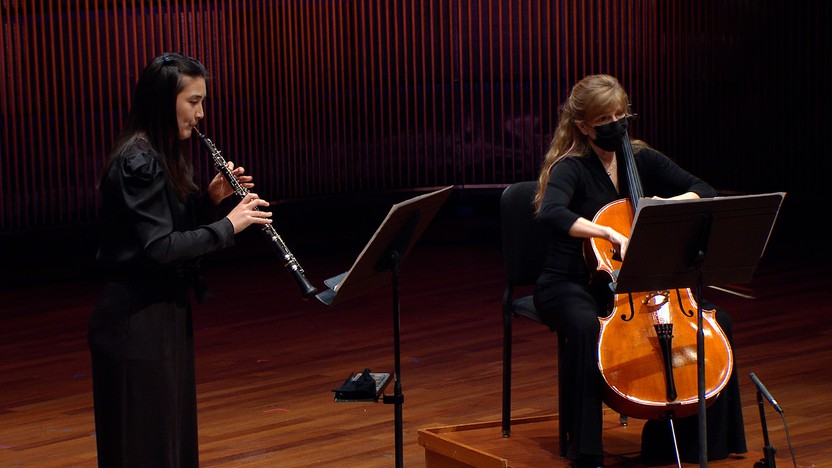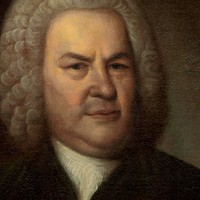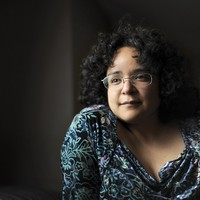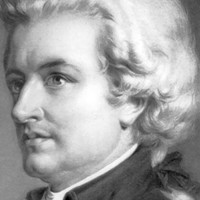Bach, Cuong, Frank and Mozart


 Listen to Audio
Listen to Audio
Just like Johann Sebastian Bach, Richard Egarr was a choir boy who gravitated to the organ, but both of these polyglot musicians were destined for wider opportunities than the limited confines of a church’s organ loft.
After joining his many relatives in the music business and rising through various Lutheran churches as an organist, the 32-year-old Bach landed a job as the Kapellmeister for a prince in Cöthen, where he had a small but distinguished private orchestra at his disposal. Even after that step up, Bach was still eyeing his next move, and he sensed an opening when he traveled to Berlin in 1718 to buy a new harpsichord. On that trip, Bach met and played for Margrave Christian Ludwig, the Duke of Brandenburg; two year later, Bach followed up with what amounted to an unsolicited job application, in the form of six concertos featuring various soloists.
The Duke didn’t even bother to send a rejection letter, and the Brandenburg Concertos languished on the shelf of his private library for over a century before they were re-discovered. And instead of following the fork in the road that might have led to a lifetime of royal service, Bach’s path returned him to his roots in the Lutheran church. He soon earned the coveted position in Leipzig that he kept for the rest of his life, directing music and training choir boys for the city’s principal churches.
Egarr’s journey also centers around a harpsichord: the one in the chapel at Clare College, Cambridge. Having never played one before, he started experimenting on it for fun, and was soon joined by a fellow conservatory student who brought along a viola da gamba and some scores photocopied from Baroque manuscripts. When a new violinist enrolled the next year, Egarr heard him playing Shostakovich and thought, “This guy’s gotta play Baroque music.” Egarr made it happen by putting up a poster at school announcing that they would be performing together. The violinist was Andrew Manze, and the program included Bach’s Brandenburg Concerto No. 4. It was Egarr’s first time performing the piece, and Manze, playing on a Baroque bow for the first time, actually dropped it in the middle of the fiendishly difficult finale. In the 40 years since, Egarr and Manze have remained kindred spirits who continue to reshape and invigorate the practice of historically informed performance.
Throughout his career, whether playing harpsichord in an accompanying continuo role or leading as a conductor, Egarr has shown a fearless tendency to explore and experiment. It makes him especially well-suited to interpret the Brandenburg Concertos, which are themselves a series of experiments in tone color and instrumentation.
Whereas the seminal concerti grossi of Corelli and those of his many imitators tended to use a consistent set of soloists — usually two violins and cello — Bach’s concertos all feature different instruments. The First Brandenburg Concerto uses the largest ensemble, including a pair of corni da caccia, or “hunting horns,” in the group of soloists. Three oboes, a bassoon and a violino piccolo — a slightly smaller cousin of the violin tuned a minor third higher — round out the solo group, while strings and basso continuo contribute supporting music. Bach adapted this concerto from the opening Sinfonia of a secular cantata from 1713, Was mir behagt, ist nur die muntre Jagd (“The lively hunt is all my heart’s desire”), and the horns and woodwinds impart a jovial, outdoor ambience that can get downright wild, as can be heard in the groundbreaking recording that Egarr led with the Academy of Ancient Music, playing on period instruments with single strings instead of sections.
So how does Egarr translate his signature freedom of expression and historical authenticity to a performance with a larger orchestra using modern instruments? As he sees it, “The Saint Paul players are a wild bunch in the best possible way. They’re incredibly open and keen to push boundaries when they’re playing. They love going for it.” In the Sixth Brandenburg Concerto, where modern cellos and bass cover the parts written for the similarly-pitched viola da gamba and violone, Egarr talks to the musicians about how to bring out a more nasal tone in the spirit of those older instruments, to maximize the contrast with the solo parts for violas and cello. He links his interpretation to an 18th-century allegory about three princes (the violas and cello) and three skeletons (the gambas and violone), and the very Lutheran idea of finding joy in death and the promise of heaven, noting that Bach wrote a cantata using a related musical theme that explored the same topic.
Egarr’s rigorous scholarship and musical flexibility go hand in hand. He points to the sources that show how tempo was a much looser construct before the twentieth century, and he encourages the freedom to push and pull the time. And he does this as an egalitarian member of the ensemble, playing from the harpsichord, instead of dictating from the front with a baton (a type of conducting that didn’t even exist until the 19th-century.) The place where he most gets to shine as an individual performer is the Fifth Brandenburg Concerto, which features flute, violin and harpsichord as soloists. Such a trio was a common chamber music ensemble at the time, playing works known as trio sonatas. The harpsichord contributes whirlwind solo lines, and it issues a monster of a cadenza at the end of the first movement. Unlike in a trio sonata, in which the harpsichord would typically have just a written bass line and some clues for how to improvise the right-hand harmonies, here the harpsichordist’s right hand plays its own melodic lines that intermingles with the flute and violin. In the finale, for example, after the violin and flute take the first two entrances of a fugue subject, the two hands of the harpsichordist serve as the third and fourth voices.
The Third Brandenburg Concerto treats all members of the ensemble as soloists, with independent lines for three violins, three violas and three cellos supported by the basso continuo accompaniment. The equitable distribution of the material is especially clear in the first movement, in which the primary motive — a three-note figure that drops to the lower neighbor note and then returns to the starting pitch— cascades through the different voices. There are places like this within the Brandenburgs where Egarr sees it as essential to maintain the texture of one player per part that Bach would have used. Elsewhere, he embraces the opportunity to beef up the string sections, quipping that Bach “loved big orchestras, when he could get them.”
The Fourth Brandenburg Concerto — the one that launched Egarr’s Baroque career back in his school days — is one that benefits from a grand treatment. It helps that the solo instruments are ones that project well: violin, plus two parts identified as “echo flutes,” a mysterious term that appears nowhere else in Bach’s music. Scholars agree (for the most part) that the intended instruments were treble recorders, and that the “echo” label referred to the loud and soft alternations in the middle movement. In performances on modern instruments, flutes substitute for the recorders. The violin takes the flashiest material, demonstrating the deep knowledge of the instrument that Bach developed as a very strong violinist himself.
The Brandenburg Concertos are uncommonly intimate and unabashedly joyful, and for Egarr, it is especially gratifying to present them with The Saint Paul Chamber Orchestra, where, in his experience, “The audience really comes to share the music, and the orchestra is inviting people to come in and experience it. That’s an incredibly special thing to feel from an organization. The music is given with great love and honesty, and a desire to share what we do, which hopefully makes things better in the world.”
Aaron Grad ©2024

Circling Back seems to reflect the moment of its creation, as well as the hope that things are getting better. It feels like waking up. It feels like remembering something significant. It feels wistful but determined. The expression “circling back” conjures images of a flight and the sense that we had been driven from our course but are now returning to the path we had charted, to the hopes and ideas we had to defer. Thank you to The Saint Paul Chamber Orchestra, Cassie Pilgrim and Sarah Lewis for bringing this piece to life. I’m incredibly grateful to have had this opportunity to circle back to music-making with you.
Viet Cuong ©2021

When Gabriela Lena Frank appeared on a list of “the top 35 female composers in classical music” compiled in 2017 by The Washington Post, chief critic Anne Midgette pointed to the significance of Frank’s “multiculturalism” and her practice of “mingling folk feeling with compositional sophistication.” Born in Berkeley to a mother of Peruvian-Chinese heritage and a father from a Lithuanian-Jewish background, Frank has embraced her ancestry, especially her connection to Peru, where she has traveled extensively. She wrote the following program note for Leyendas: An Andean Walkabout, a score she created for string quartet in 2001 and arranged for string orchestra in 2003.
Leyendas: An Andean Walkabout draws inspiration from the idea of mestizaje as envisioned by Peruvian writer José María Arguedas, where cultures can coexist without the subjugation of one by the other. As such, this piece mixes elements from the western classical and Andean folk music traditions.
Toyos depicts one of the most recognizable instruments of the Andes, the panpipe. One of the largest kinds is the breathy toyo which requires great stamina and lung power, and is often played in parallel fourths or fifths.
Tarqueda is a forceful and fast number featuring the tarka, a heavy wooden duct flute that is blown harshly in order to split the tone. Tarka ensembles typically also play in fourths and fifths.
Himno de Zampoñas features a particular type of panpipe ensemble that divides up melodies through a technique known as hocketing. The characteristic sound of the zampoña panpipe is that of a fundamental tone blown fatly so that overtones ring out on top, hence the unusual scoring of double stops in this movement.
Chasqui depicts a legendary figure from the Inca period, the chasqui runner, who sprinted great distances to deliver messages between towns separated from one another by the Andean peaks. The chasqui needed to travel light. Hence, I take artistic license to imagine his choice of instruments to be the charango, a high-pitched cousin of the guitar, and the lightweight bamboo quena flute, both of which are featured in this movement.
Canto de Velorio portrays another well-known Andean personality, a professional crying woman known as the llorona. Hired to render funeral rituals even sadder, the llorona is accompanied here by a second llorona and an additional chorus of mourning women (coro de mujeres). The chant Dies Irae is quoted as a reflection of the comfortable mix of Quechua Indian religious rites with those from Catholicism.
Coqueteos is a flirtatious love song sung by gallant men known as romanceros. As such, it is direct in its harmonic expression, bold, and festive. The romanceros sing in harmony with one another against a backdrop of guitars which I think of as a vendaval de guitarras (“storm of guitars”).
—Gabriela Lena Frank
Aaron Grad ©2022

Mozart, the onetime child prodigy who had dazzled audiences all over Europe, found himself in an unexpected predicament in his early adulthood. Through his teens and into his early twenties, he was stuck in his hometown of Salzburg, working for a troublesome Archbishop alongside his overbearing father, Leopold. Young Wolfgang fulfilled his basic duties by writing a certain amount of church music, but on the side, he cultivated his own patrons in Salzburg and beyond. Through the many symphonies and concertos he wrote for private clients in those years, along with all the lighter forms of musical entertainment, Mozart brought his instrumental craft to a new level of mastery, and he also proved the viability of working on his own. It ultimately gave him the confidence, at age 25, to quit his Salzburg job and launch a freelance career in Vienna, where he spent the miraculous final decade of his life.
When composers of Mozart’s day were asked to entertain their patrons with party music, they dashed off simple, lighthearted works — divertimentos, serenades, nocturnes and the like — that were hardly worth reusing or remembering. But Mozart being Mozart, even his light music from his Salzburg years has withstood the test of time. One patron he would have been especially eager to please was Countess Antonia Lodron, an avid musician herself and one of the city’s most influential citizens. In 1776 he supplied her with a concerto for three pianos that she could play with her daughters, plus a Divertimento scored for a typical ensemble of two horns and strings. He followed up with another Divertimento for the same scoring in June of 1777, to help celebrate the countess’ name day.
Mozart, a strong violinist, probably led the ensemble from the first violin part, and he would have been unfazed by the melodic passages that draw the violin high into its upper range, whether in the fast first movement or during the decorative variations of the second movement. The other substantial inner movement, an Adagio, is exemplary night music, with plucked accompaniment imparting the character of an intimate lovers’ serenade. Twin minuets surround the Adagio as breezy palate cleansers, although Mozart may have pushed the boundaries a bit with a mischievous move to a minor key during the first minuet’s contrasting trio. The drama of the finale is even more unexpected, with its introductory recitative that casts the lead violin as a moody soprano in a wordless opera scene.
Aaron Grad ©2020
Get driving directions and find nearby parking.
Find dining options close to the venue.
View seating charts to find out where you'll be seating.
SPCO concerts are made possible by audience contributions.
For exclusive discounts, behind-the-scenes info, and more:
Sign up for our email club!
